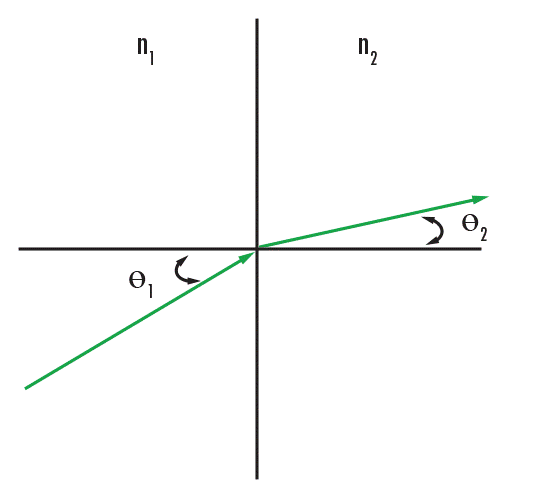
-
+86-156 60188203
[email protected] - Dazhai, Nanyang City, Henan Province China
- Mon - Sat 8.00 - 18.00 Sunday Closed


When optical designers talk about optical lenses, they are referring to a single lens element or a group of lens elements (Figure 1). Examples of monolithic lenses include plano-convex (PCX) lenses, doubly convex (DCX) lenses, aspherical lenses, etc. Examples of component components are telecentric imaging lenses, infinity correction objectives, beam extenders, etc. Each combination consists of a series of lens elements, each with a specific lens geometry that controls light in its own way.

Figure 1: Plano-convex lens (single element on the left) and telecentric imaging lens (combination of elements on the right)
Snell's refraction law
Before delving into each type of lens geometry, consider how optical lenses bend light using refraction properties. Refraction is the way light deviates from a certain amount as it enters or leaves a medium. The deviation is a function of the refractive index of the medium and the Angle of light with respect to the surface normal. This property is governed by Snell's refraction Law (equation 1), where n1 is the refractive index of the incident medium, θ1 is the Angle of the incident light, n2 is the index of the refracting medium, and θ2 is the Angle of the refracting light. Snell's law describes the relationship between the incidence Angle and the transmission Angle of light as it travels through a variety of media (Figure 2).
Snell's refraction law
Before delving into each type of lens geometry, consider how optical lenses bend light using refraction properties. Refraction is the way light deviates from a certain amount as it enters or leaves a medium. The deviation is a function of the refractive index of the medium and the Angle of light with respect to the surface normal. This property is governed by Snell's refraction Law (equation 1), where n1 is the refractive index of the incident medium, θ1 is the Angle of the incident light, n2 is the index of the refracting medium, and θ2 is the Angle of the refracting light. Snell's law describes the relationship between the incidence Angle and the transmission Angle of light as it travels through a variety of media (Figure 2).

Figure 2: Snell's refraction law
Copyright © Nanyang City Jingliang Optical Technology Co., Ltd. All Rights Reserved — Privacy Policy